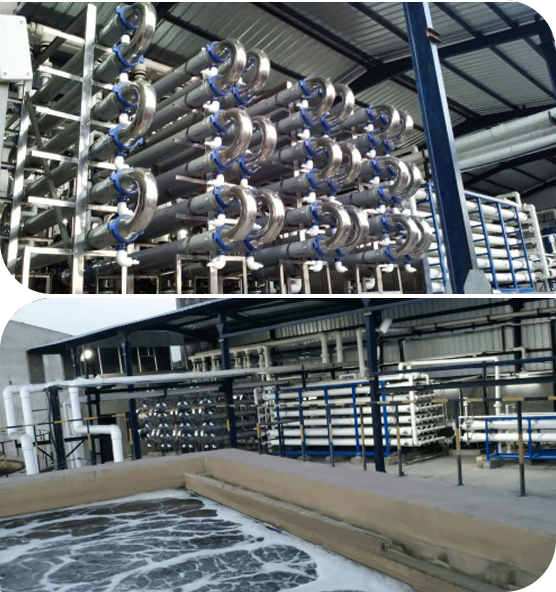
Waterman Engineers Australia is probably the main producers of Zero Liquid Discharge program. A ZLD technique is usually a treatment process that is utilized to remove all of the liquid squander from the program. The aim of ZLD water treatment is to reduce wastewater economically and deliver potable drinking water that is certainly in shape for typical use. Zero discharge method is a complicated cure approach that comprises ultrafiltration, reverse osmosis, evaporation and fractional electro deionization. And we are a perfectly-regarded supplier of ZLD units.
In lots of Industries, like power, oil & gasoline, chemicals, mining and Some others, a large amount of wastewater is created that has to be managed. Conventionally, this discharge of wastewater is completed by way of a plant outfall to your surface area drinking water physique like an evaporation pond, or sometimes deep nicely injected. These techniques result in quite a few environmental issues by the public in several regions of the globe, as h2o is really a scarce supply and its administration ought to be monitored. These fears have resulted while in the institution of ZLD processes by lots of industries to lessen their environmental footprint and boost sustainability. And, Waterman Engineers Australia are finest ZLD suppliers you'll find for This technique.
Houses OF ZERO LIQUID DISCHARGE Procedure
The properties of a Zero Liquid Discharge method could vary depending on the particular style and design and technologies applied. Nevertheless, some frequent Homes of ZLD programs incorporate:
Drinking water Conservation: One among the principal goals of ZLD techniques is always to conserve h2o by reducing the discharge of liquid waste into the atmosphere.
High H2o Purity: ZLD devices are intended to make large-high quality h2o that is definitely cost-free from impurities and contaminants, which makes them well suited for use in lots of industrial processes.
Flexibility: ZLD methods are often built to accommodate a wide selection of enter liquid streams, which makes them functional and appropriate for use in different industries.
Innovative Wastewater Cure: Zero liquid discharge systems use advanced wastewater procedure ways to take out impurities and contaminants from your effluent, producing substantial-quality drinking water.
Squander Reduction: ZLD systems support cut down waste by cutting down the volume of liquid waste that needs to be disposed of and by manufacturing a concentrated, solid waste content which might be safely disposed of.
Strength Effectiveness: ZLD units may be Vitality-intense mainly because of the higher Vitality demands of evaporation and various wastewater treatment processes. Nevertheless, improvements in technological innovation are building Zero liquid discharge units extra Electrical power-economical and price-productive.
Waterman Engineers Australia manufactures Zero Liquid Discharge (ZLD) units built to eliminate all liquid squander, aiming to provide potable water and minimize environmental effects. Their ZLD units commonly include things like ultrafiltration, reverse osmosis, evaporation, and fractional electro deionization. Critical technologies used are Slipping Film Brine Concentrators, Compelled Circulation Crystallizer, and Some others, that has a two-phase process of pre-focus and evaporation/crystallization to Recuperate and reuse h2o. These programs are adaptable to distinct industries, emphasizing h2o conservation, significant water purity, squander reduction, and Power performance. Specialized technical specs are diverse and customizable, thinking about elements like drinking water source, circulation rate, and feed drinking water quality.
The need for Zero Liquid Discharge (ZLD) units arises with the necessity to handle environmental fears connected with drinking water scarcity and pollution. In industries like electric power, oil & gas, and mining, extensive quantities of wastewater are created. Typically, this wastewater is discharged into bodies of drinking water, causing pollution and depleting clear h2o means. ZLD techniques intention to attenuate these impacts by managing and recycling wastewater inside the commercial course of action, thus conserving h2o, decreasing waste, and selling sustainability.
When it comes to the technological technical specs of the Zero Liquid Discharge (ZLD) system, essential facets to target include things like the h2o supply it is going to take care of, the process's move level, the standard of feed drinking water, the phases of remedy concerned, the recovery rate of h2o, solutions for focus disposal, resources of building, working circumstances, and system automation and control. These things make sure the program's usefulness, longevity, and effectiveness in treating and recycling industrial wastewater.
Zero Liquid Discharge (ZLD) crops present Positive aspects including h2o conservation, waste reduction, and air pollution avoidance, contributing to environmental sustainability. They're applicable in industries like energy technology, oil and gas, substances, and mining, the place they help in taking care of industrial wastewater efficiently, reducing the ecological footprint, and complying with rigorous environmental laws. These units are critical in spots Zld System Manufacturer Zero Liquid Discharge System struggling with drinking water scarcity and for industries aiming to improve their sustainability and operational effectiveness.
FAQs for a Zero Liquid Discharge (ZLD) technique normally deal with its operational rules, Price-performance, routine maintenance needs, environmental effects, applicability across different industries, and regulatory compliance. These issues assist end users understand the program's Added benefits, technological demands, and suitability for their certain wastewater management desires.
one. Zero Liquid Discharge (ZLD) is a wastewater therapy method built to reduce all liquid squander.
two. The procedure's factors are affected by the precise industrial process, wastewater composition, and regulatory specifications.
3. Effluent treatment plants remove pollutants from textile effluents to prevent environmental contamination.
4. Advantages include h2o conservation, air pollution reduction, and regulatory compliance.
5. The objective is to minimize environmental impact by recycling h2o and lessening squander.
6-nine. Effluent cure vegetation are stages in wastewater treatment: Most important (Actual physical separation), secondary (biological therapy), and tertiary (Sophisticated procedure).
ten. Unit functions incorporate filtration, sedimentation, biological procedure, and disinfection.
11. Restricting parameters are components that influence the therapy's performance, like pH and contaminant concentration.
twelve. Layout concerns involve stream price, effluent composition, and wished-for good quality of handled h2o.